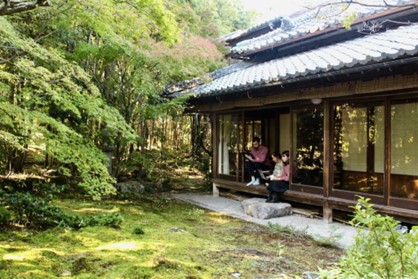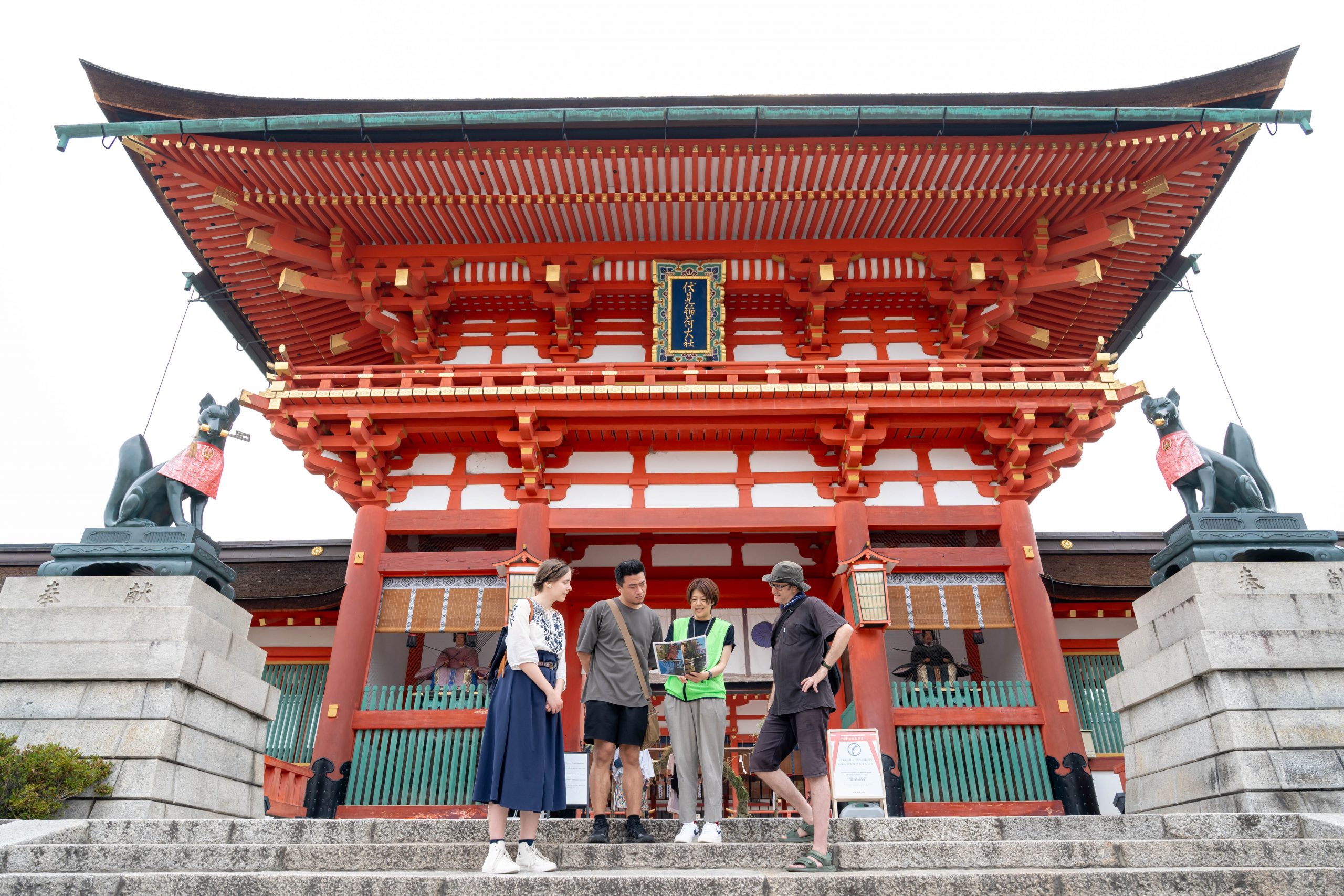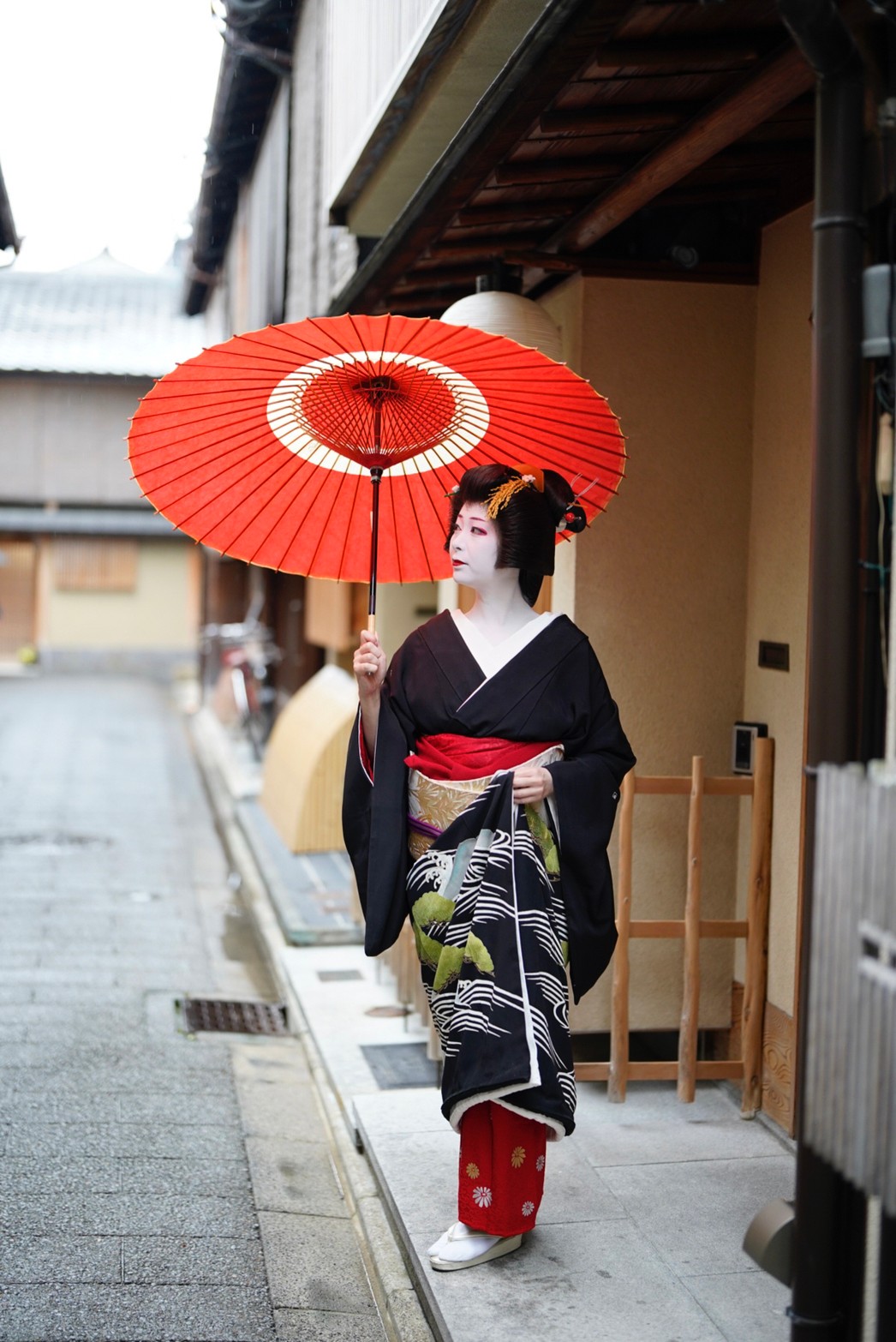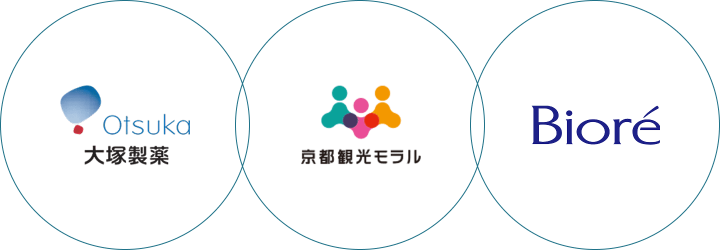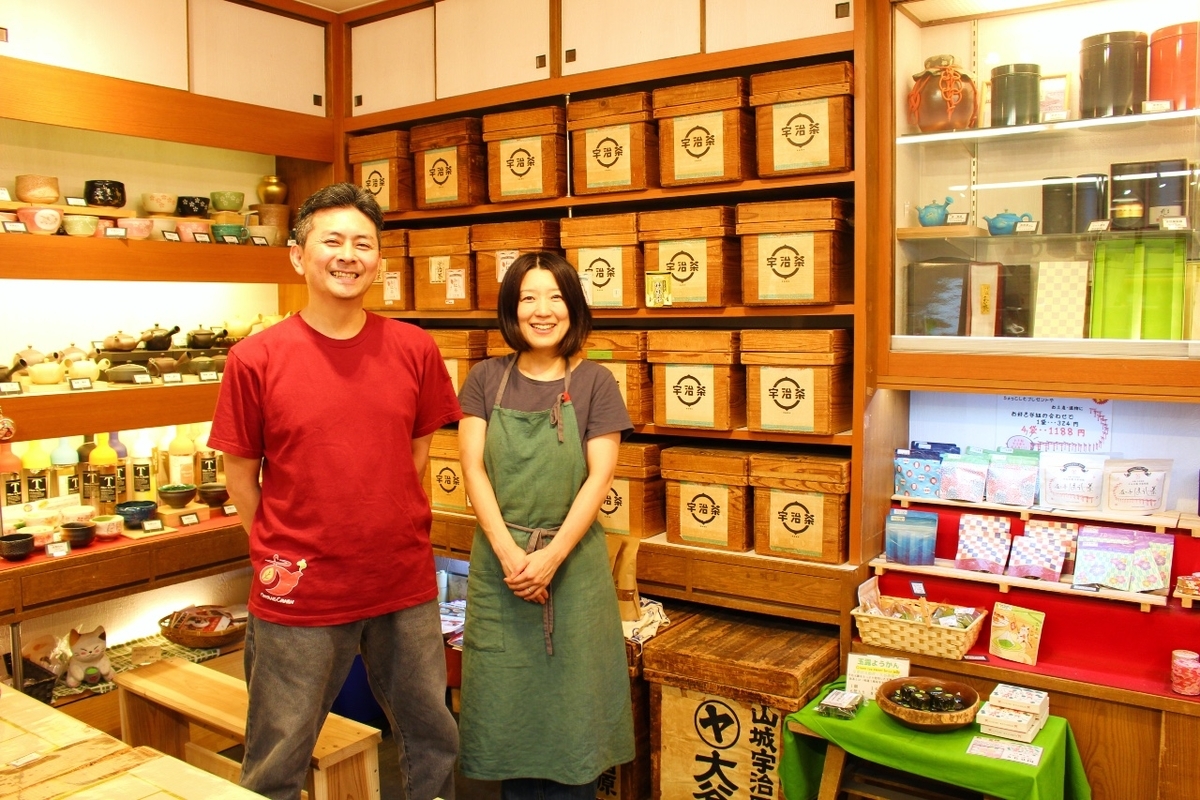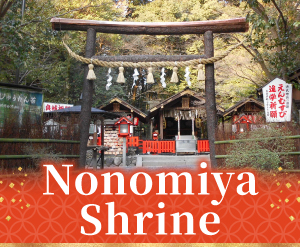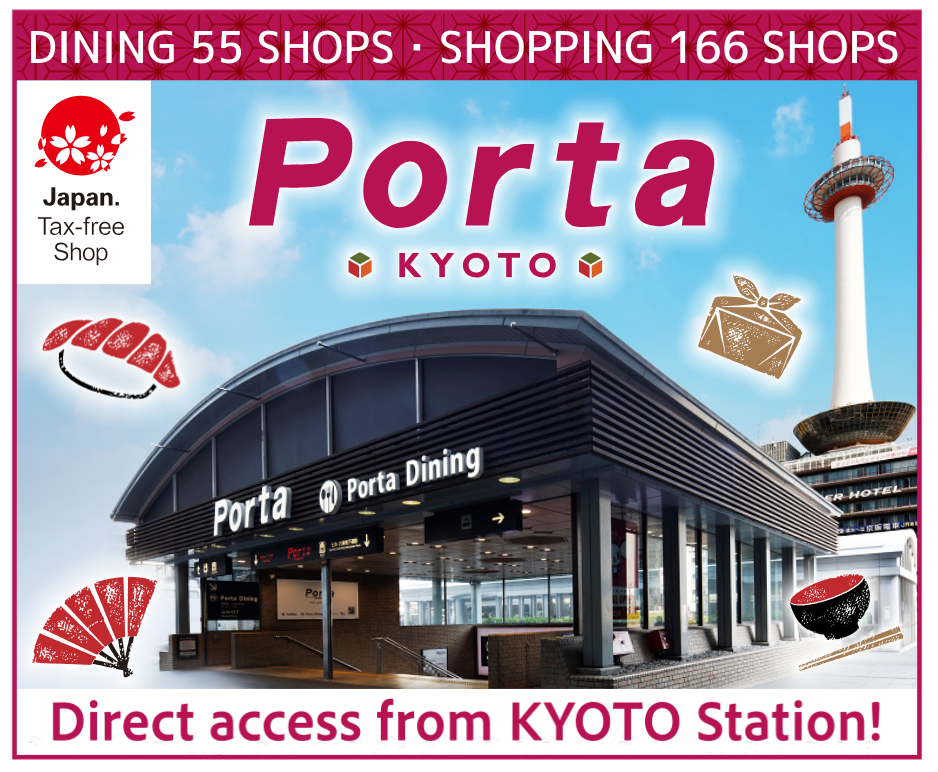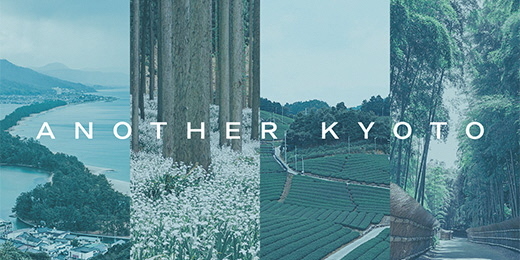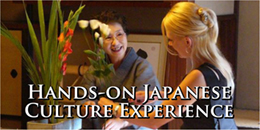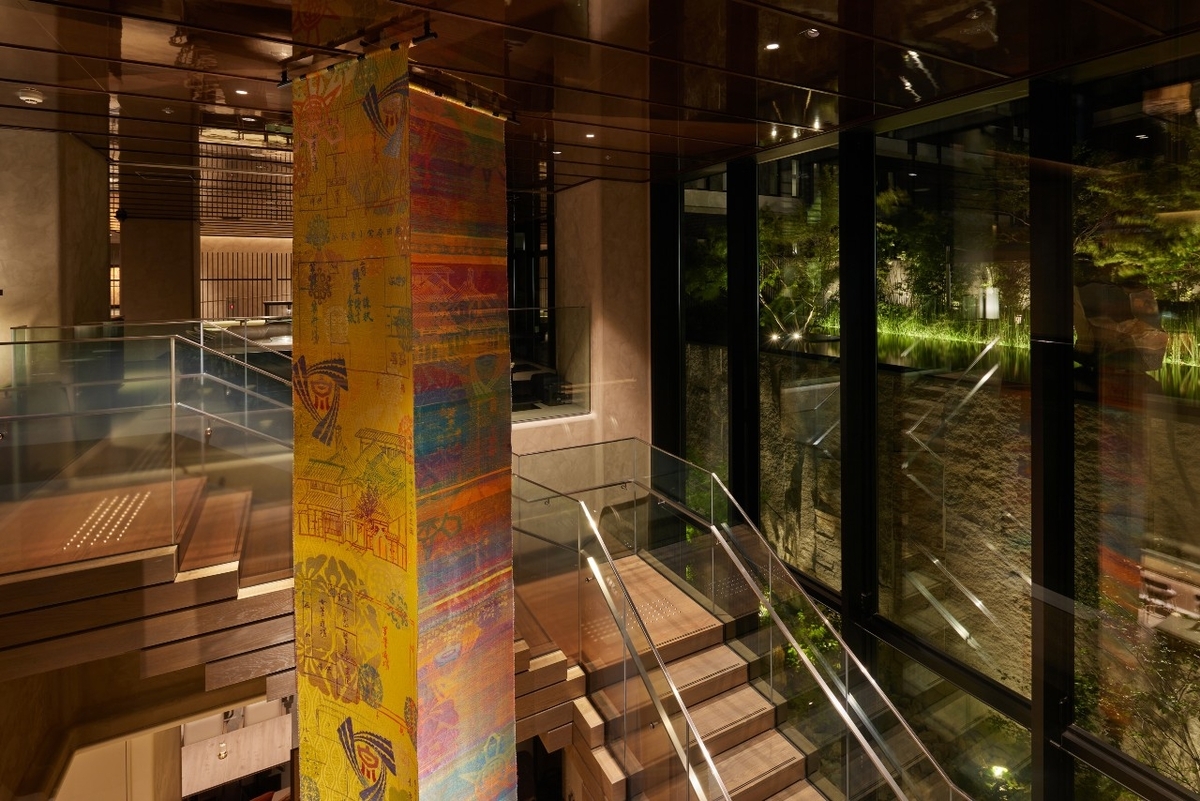
A tapestry based on the motif of the elementary school’s emblem – Photo courtesy of THE HOTEL HIGASHIYAMA KYOTO TOKYU, A Pan Pacific Hotel
THE HOTEL HIGASHIYAMA KYOTO TOKYU, A Pan Pacific Hotel, located in the popular tourist area of Higashiyama, officially opened in the summer of 2022. Built on the site of a former elementary school, the hotel is also home to various community exchange facilities and has been selected as a “Company Committed to Excellence in Ethical and Sustainable Tourism Business Practices” under the “Kyoto Guidelines for Sustainable Tourism” actively promoted by Kyoto City.
Company Committed to Excellence in Ethical and Sustainable Tourism Business Practices”
A hotel themed around art and community exchanges in Kyoto, built on the site of a former elementary school
THE HOTEL HIGASHIYAMA KYOTO TOKYU, A Pan Pacific Hotel was built right next to Awata Shrine, facing Sanjo-dori Street, and when you step into the lobby, the large tapestry hanging in the atrium is particularly eye-catching. “The contemporary art of Aiko Tezuka, which uses the techniques of Nishijin textiles, incorporates motifs from the school emblems and school building maps of Shirakawa Elementary School and Awata Elementary School, which used to occupy this site,” explains General Manager Terue Ogawara.
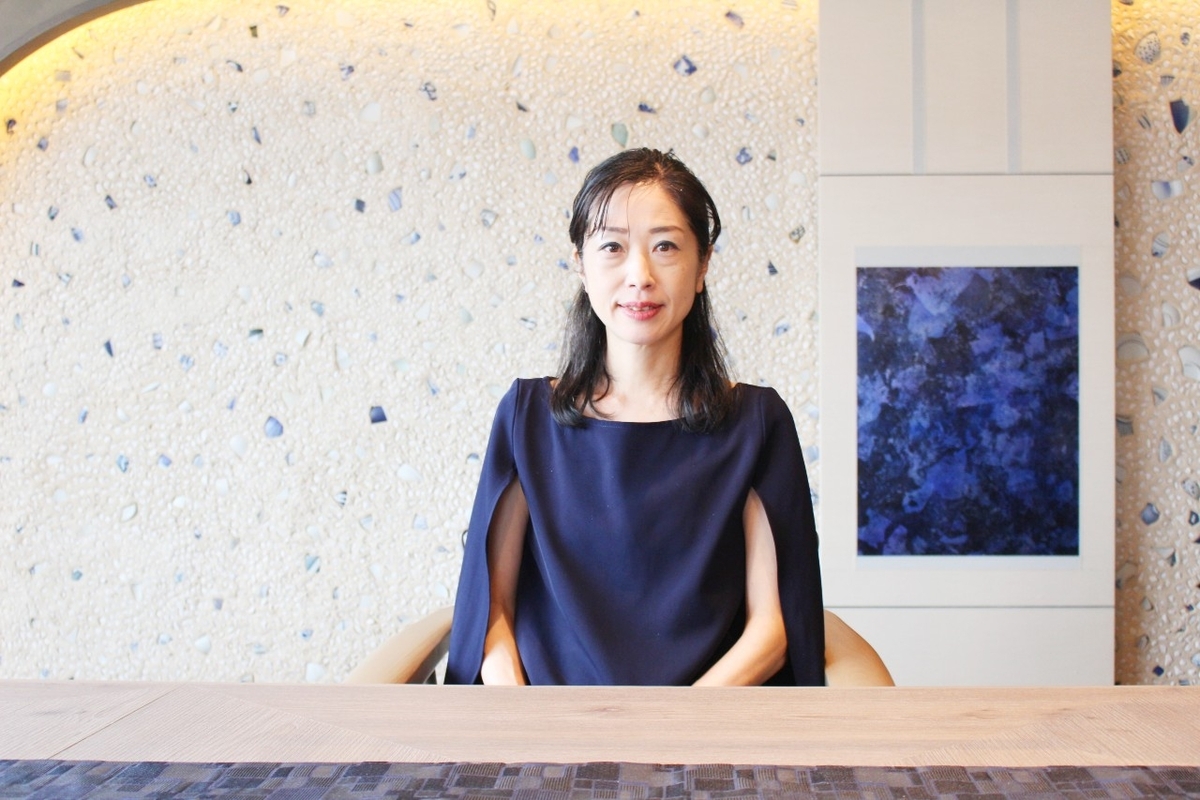
Terue Ogawara, General Manager of THE HOTEL HIGASHIYAMA KYOTO TOKYU, A Pan Pacific Hotel
Shortly after the start of the Meiji era, elementary schools were set up in Kyoto well ahead of the rest of the country, but it was the people of each town who were responsible for their establishment. The elementary schools, which were built to compete with each other in each region, were the pride of their towns, and because of this, people had a deep attachment to their schools, and when it came to deciding what to do with the sites after the schools closed, there were many requests for them to be used in a way that would convey the history and culture of the region.
In response to these requests, the hotel displays not only art in the lobby, but also Awata-yaki tea utensils and pots that originated in this area, and has made efforts to make the design of the interior and guest rooms, the selection of items in the shop, the food in the restaurant, and the hands-on programs unique to Kyoto and this particular region.
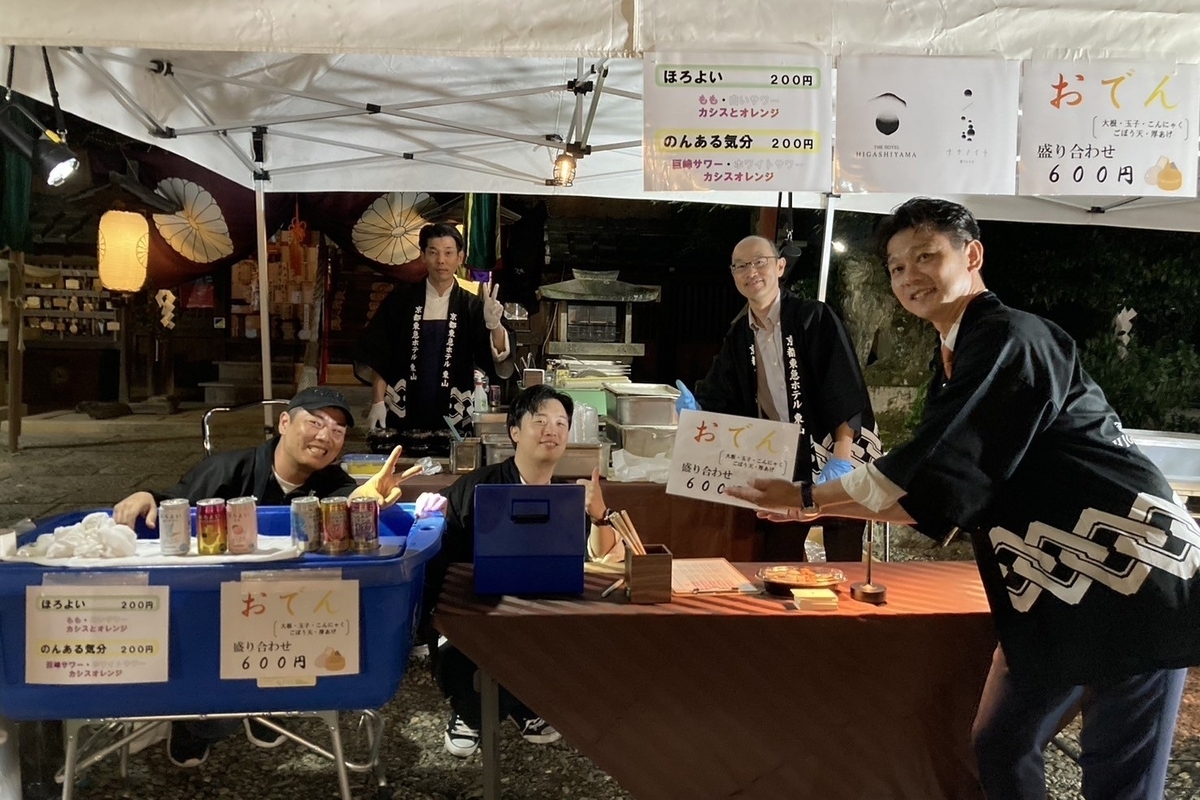
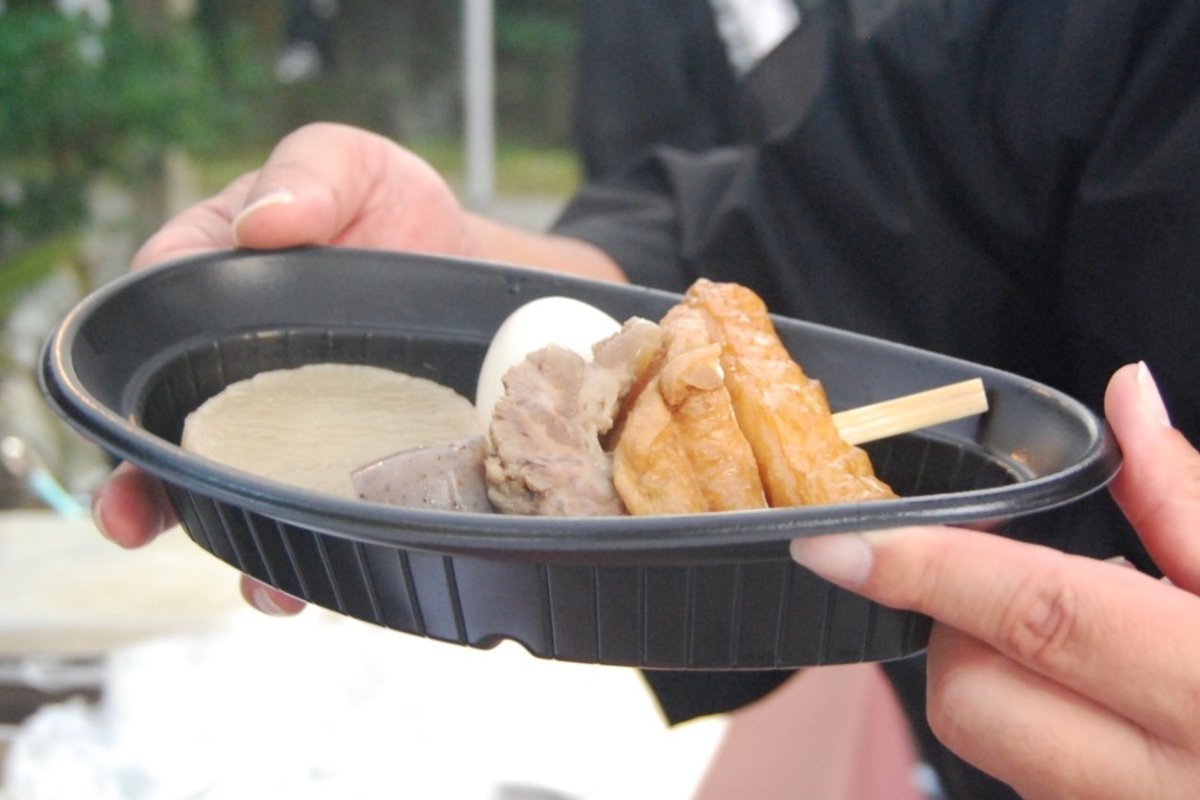
Food stall at the Awata Festival – Photo courtesy of THE HOTEL HIGASHIYAMA KYOTO TOKYU, A Pan Pacific Hotel
The hotel actively participates in the Awata Festival, which is held at Awata Shrine, and for the duration of the festival, an altar is set up in the lobby, which serves as a makeshift community center. It also houses and displays the large lanterns used in the festival. On the same grounds is the Community Exchange Facility Awata, which provides bento lunches and food stalls during festivals and events such as the wintertime Daikon-daki event (offering of cooked Japanese radish to public), and also holds joint disaster prevention drills with people from the local community, with staff members joining the fire brigade and the mothers’ volleyball team to deepen friendship and cooperation.
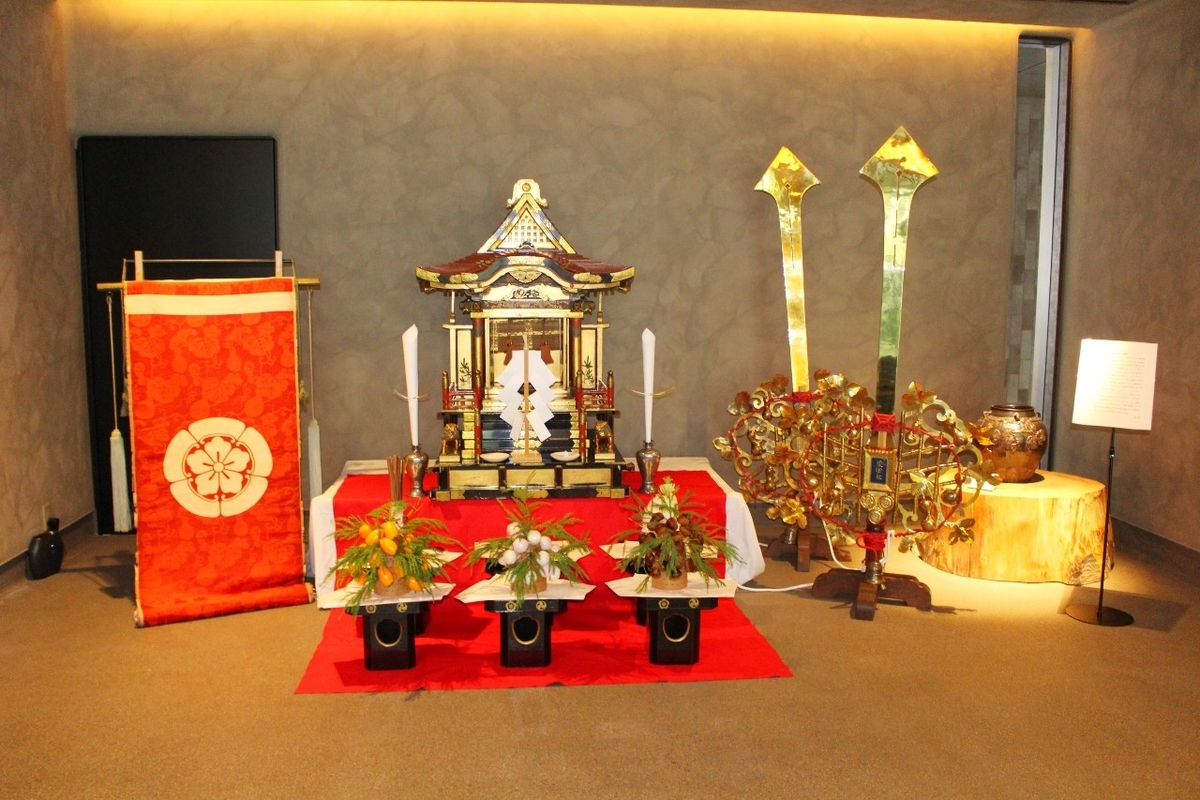
Offerings at the Awata Festival
Local cuisine and Kyoto crafts made by local chefs and artisans
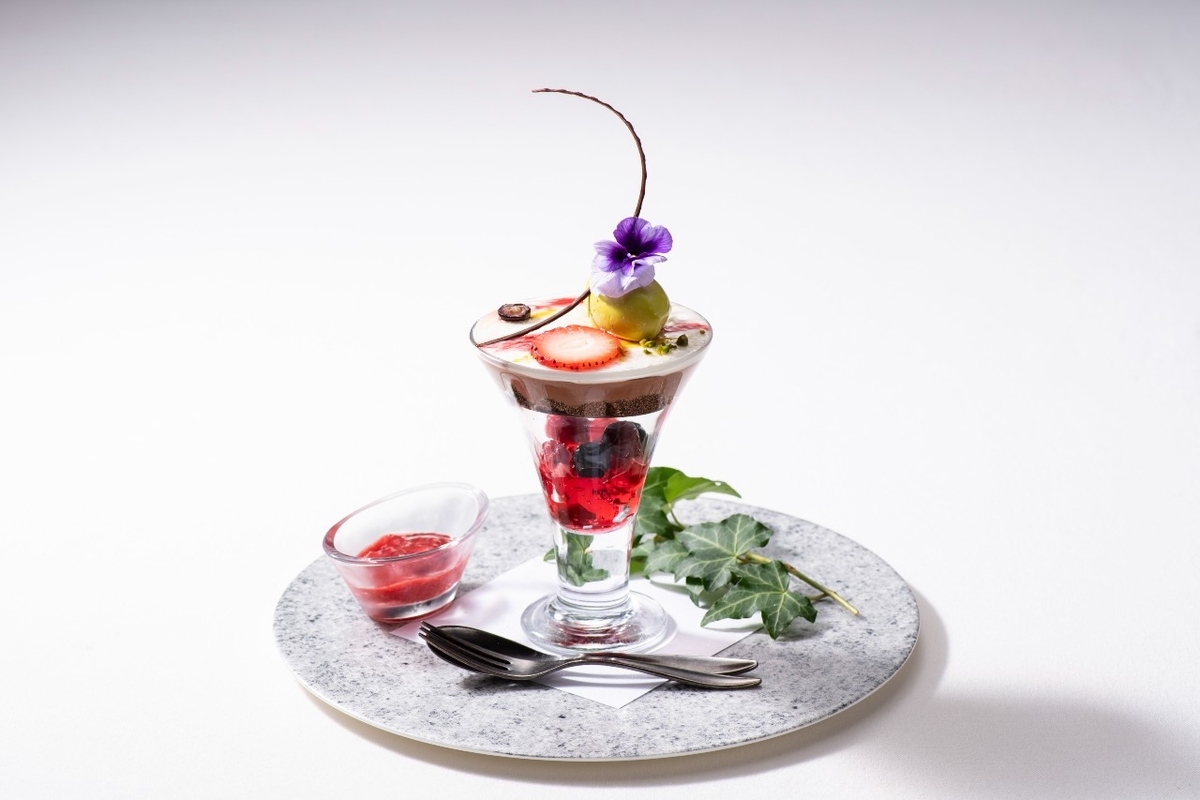
Dessert from Nananoichi restaurant, combining French and Japanese cuisines – Photo courtesy of THE HOTEL HIGASHIYAMA KYOTO TOKYU, A Pan Pacific Hotel
Nananoichi, one of the restaurants in the hotel, serves Kyoto-style French dishes by combining the essence of Japanese cuisine with traditional French cuisine. The name “Nananoichi” reflects the fact that it is located in one of the seven entrances to Kyoto, as well as the desire to be a place where people from the local area can casually drop in once every seven days.
The restaurant not only accommodates dietary diversity, including options for vegans and vegetarians, but also incorporates local ingredients such as vegetables and meat to support local production for local consumption, and uses ingredients such as kelp and dried bonito flakes from long-established stores that have been beloved in the Higashiyama area for generations, such as Chidorisu, Osakaya Koji, and Kakizen Shoten, all of which are situated close to the hotel.
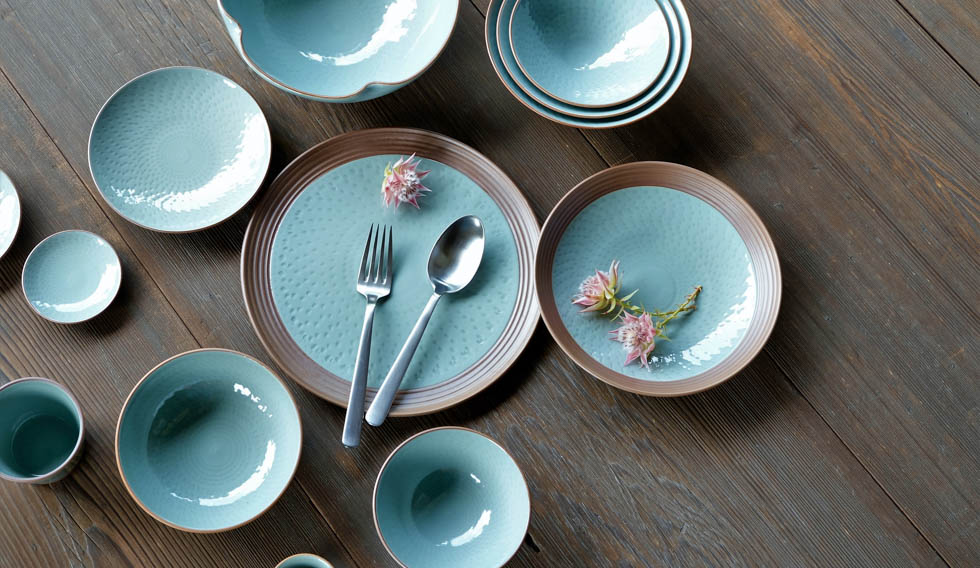
At Tea & Bar, which is located on the lobby floor and produced by Gion Tsujiri, a long-established tea shop in Higashiyama that specializes in Uji tea, visitors can enjoy authentic matcha and sencha tea while taking in the view of the courtyard.
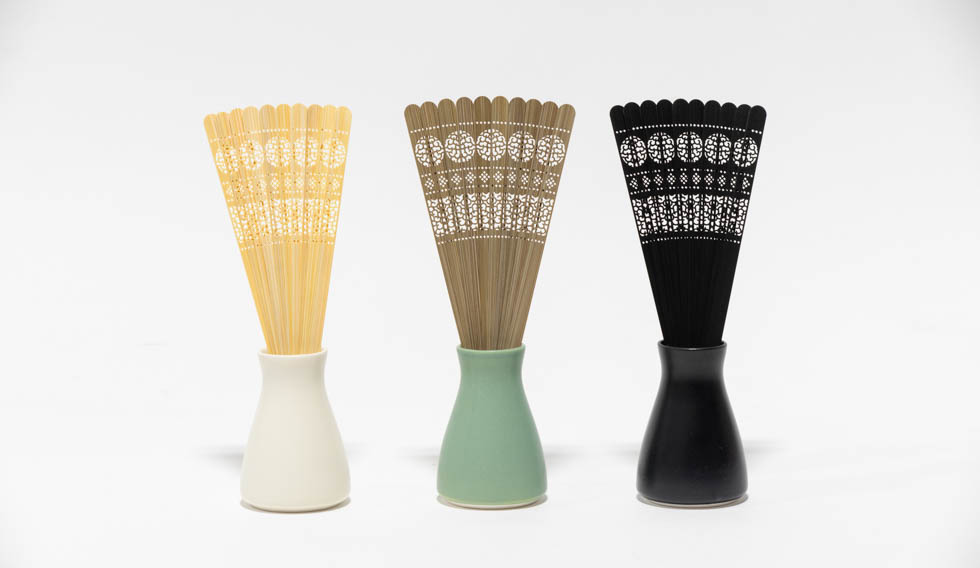
Original works by up-and-coming artists – Photo courtesy of THE HOTEL HIGASHIYAMA KYOTO TOKYU, A Pan Pacific Hotel
The crafts on display in the hotel shop are all works created by up-and-coming contemporary artists, including Kyo-yaki and Kiyomizu-yaki pottery and Kyo-Yuzen dyed textiles, selected by the nearby Kyoto Museum of Crafts and Design, and each item is accompanied by a detailed explanation of the artist and workshop where it was made. Special themed exhibitions are also held each season, and visitors can be seen examining the items on display and asking questions in an atmosphere reminiscent of a museum shop.
Furnishings that convey the charm of the area and sustainable services
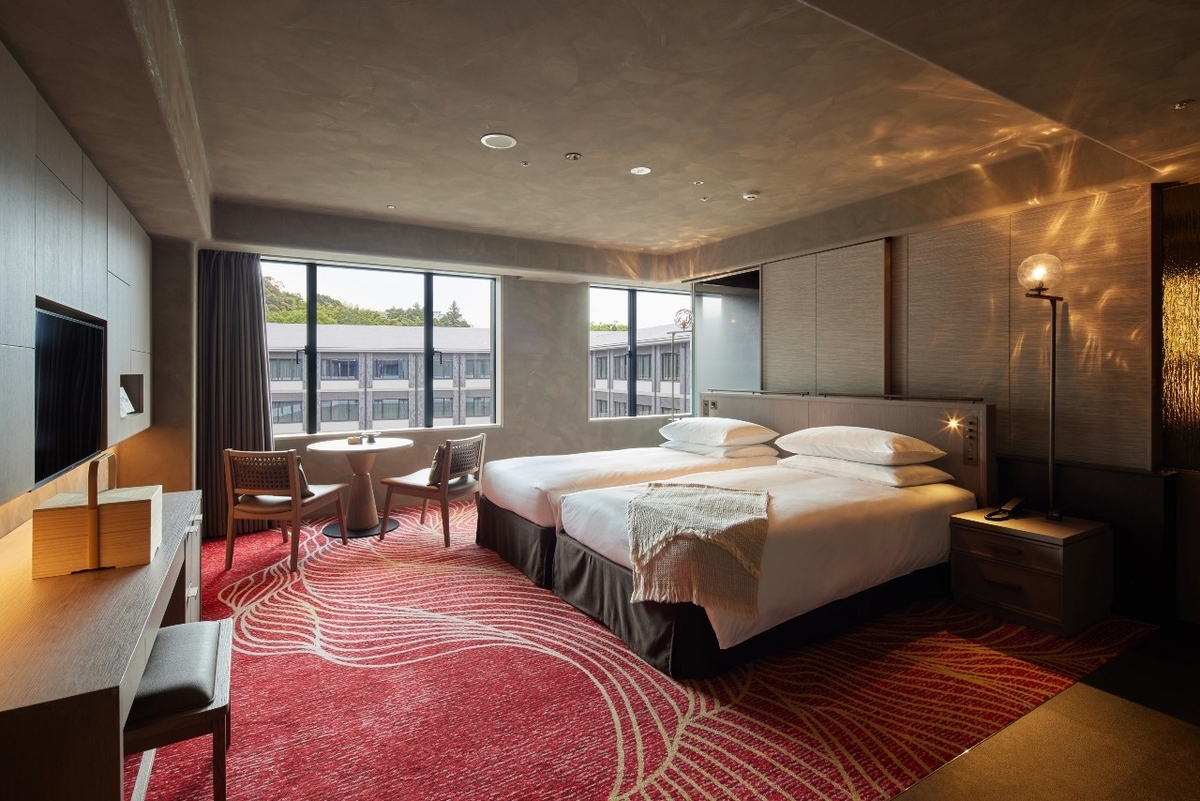
Guest room with a sophisticated design – Photo courtesy of THE HOTEL HIGASHIYAMA KYOTO TOKYU, A Pan Pacific Hotel
The interior design of the hotel and guest rooms was inspired by the tranquil sound of the Shirakawa River flowing nearby and the flickering light reflected on the water’s surface, and all the guest rooms are furnished with books curated around the theme of Kyoto and Japanese culture.
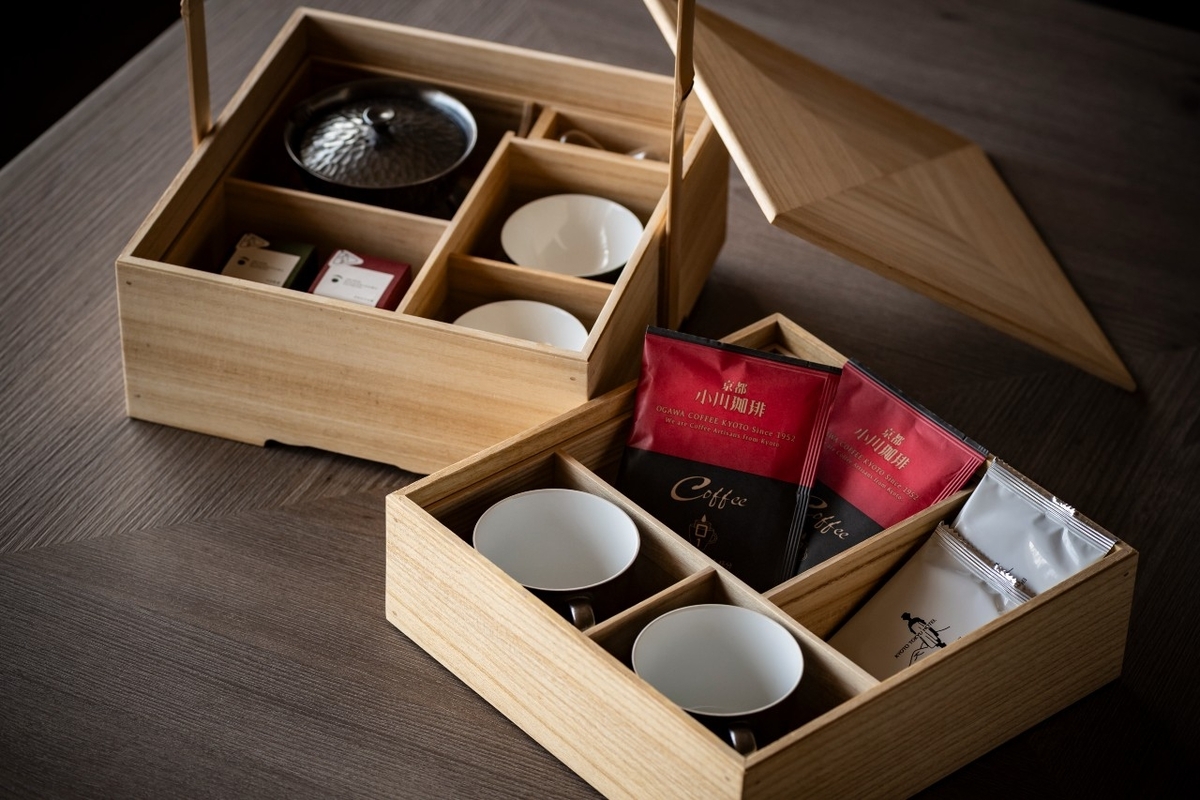
Tea box inspired by traditional Japanese culture – Photo courtesy of THE HOTEL HIGASHIYAMA KYOTO TOKYU, A Pan Pacific Hotel
The tea box containing a Japanese teapot and teacups is particularly eye-catching. This tea box set was specially made for the hotel by Takano Chikko, a company that produces tea utensils. The finished products, which are made by skilled craftsmen who bend each piece of bamboo and combine them with paulownia wood, have a modern appearance that is stripped of all unnecessary elements, adding to the guest rooms a touch of refinement that is unique to Kyoto.
Given that 70% of the hotel’s guests are inbound tourists, the hotel also provides explanatory booklets with English instructions on how to prepare the tea. “We want our overseas guests to be able to experience Uji tea in a relaxed atmosphere, and to be able to experience Japanese culture in the private space of their guest room,” says Ogawara. This has led some visitors to develop an interest in Uji tea and tea bowls, with some even saying they want to continue enjoying them after returning to their home countries.
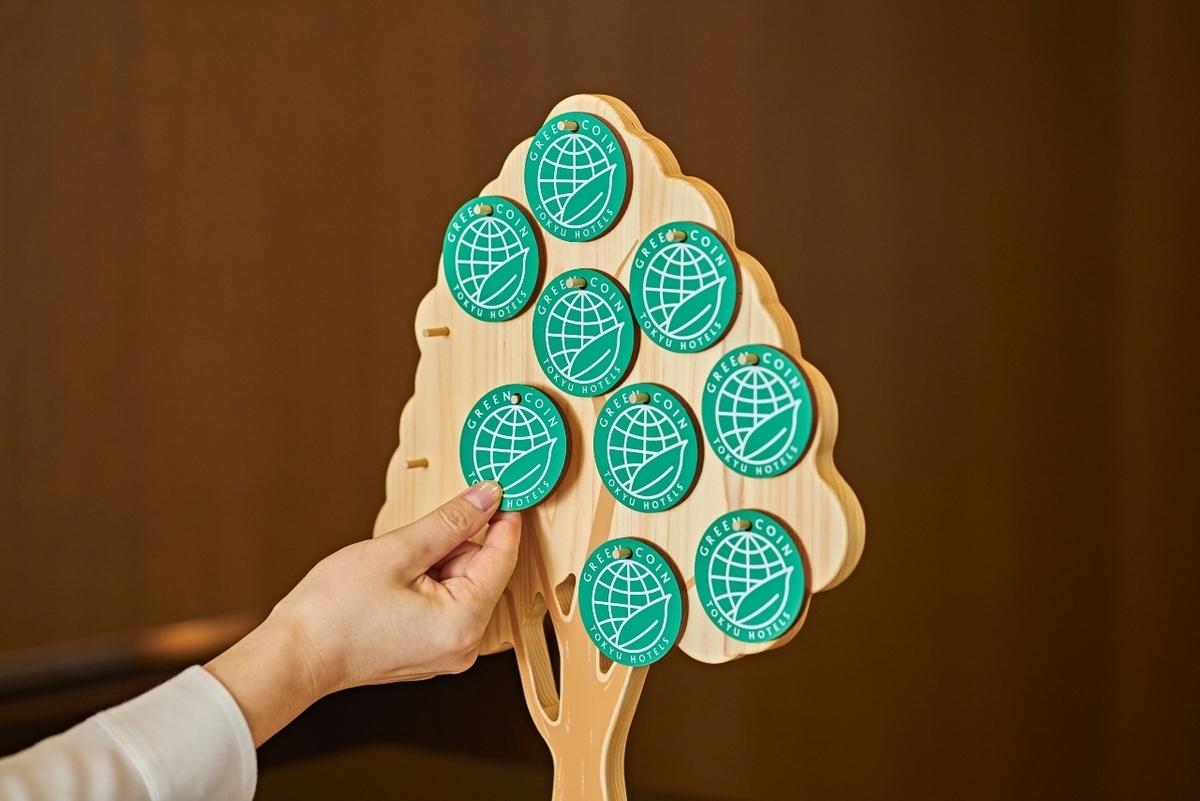
Green coins that contribute to environmental conservation – Photo courtesy of THE HOTEL HIGASHIYAMA KYOTO TOKYU, A Pan Pacific Hotel
The hotel is also actively promoting initiatives to achieve the SDGs, and has introduced a veggie broth, made from vegetable peels and scraps that would otherwise be wasted, for use in soups and sauces of selected menu items, as well as paper packaging for amenities, card keys made from cherry wood, straws made from pineapple leaf fiber, and wooden stirrers. Also, instead of plastic bottles, aluminum bottles of drinking water are used in the guest rooms.
As one of the initiatives of the Tokyu Hotel Group as a whole, if a guest does not use the amenities provided, they can bring the green coin provided to them to the front desk, and the hotel will make a donation to a foundation for environmental conservation activities on behalf of the guest.
Workshops that allow visitors to experience Japanese culture in a deeper way
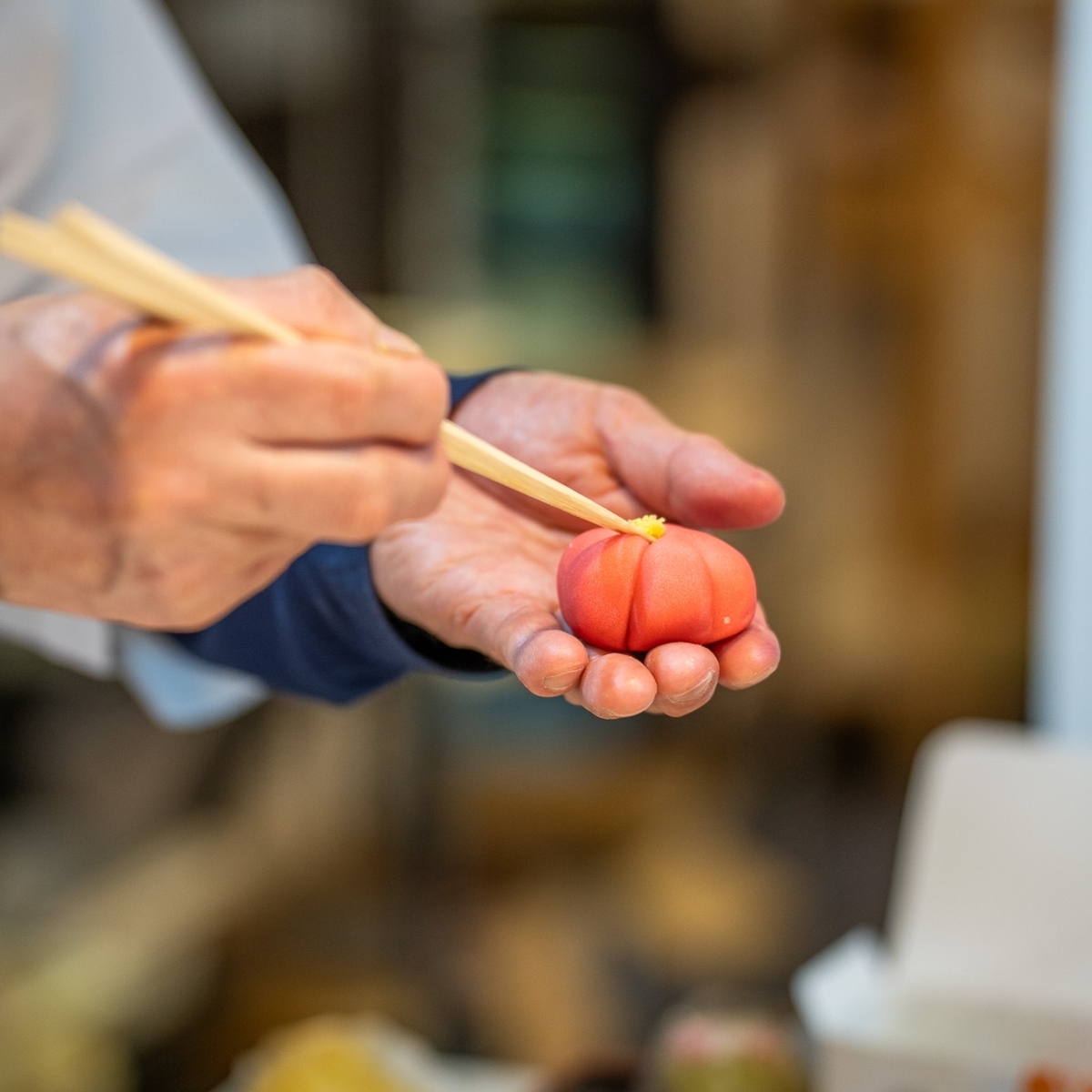
Japanese confectionery-making experience activity – Photo courtesy of THE HOTEL HIGASHIYAMA KYOTO TOKYU, A Pan Pacific Hotel
Ogawara, who has been involved with the hotel since it was first established, was born and raised in Kyoto. After many years of experience as a hotelier in Kyoto, she has deepened her relationships with many craftspeople and artists, including those working at historic shrines and temples and at the Kyoto Museum of Crafts and Design. The art displayed in the hotel, the crafts on sale in the shops, and the various workshops and hands-on events hosted by the hotel all make use of the connections that Ogawara has cultivated over the years. The hotel’s “Kyo Iroha” activity is particularly popular, offering a variety of experiences that appeal to the five senses – eating, seeing, smelling, touching and listening – enabling visitors to experience Kyoto’s culture in a deeper and more enjoyable way. The program’s content is so extensive that it attracts many repeat visitors.
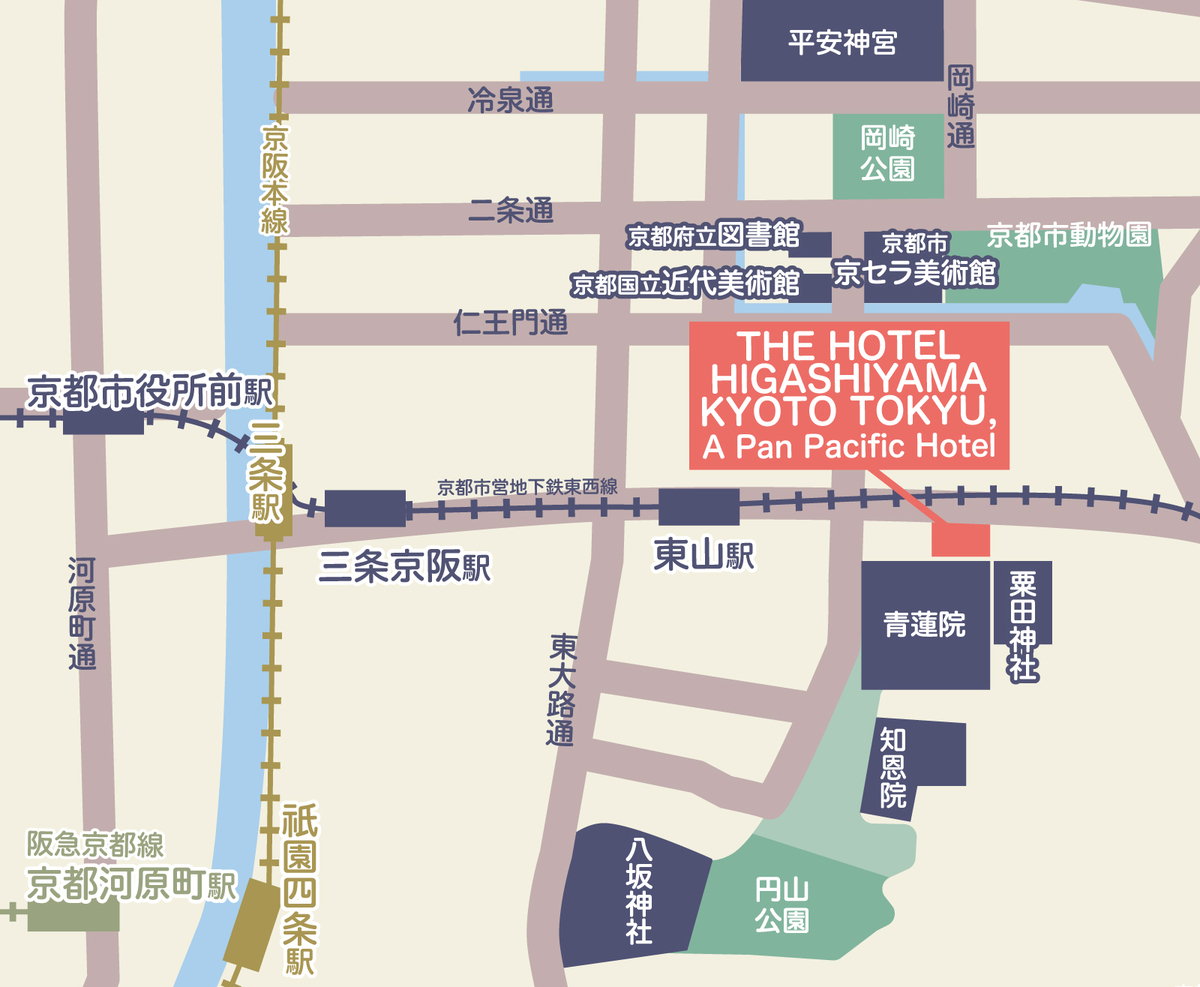
Map of the area around the hotel
There are many well-known landmarks in the Higashiyama area where the hotel is located, such as Heian Shrine, Nanzen-ji Temple, Eikando Temple, Yasaka Shrine and Chion-in Temple. This is also a cultural zone that led the modernization of Kyoto during the Meiji era. In addition to The National Museum of Modern Art, Kyoto, the Kyoto City KYOCERA Museum of Art, and the Lake Biwa Canal Incline, the hotel is also a starting point for trekking despite its city center location, as the Tokai Nature Trail runs behind the hotel. There is also a footbath in the spacious courtyard, which is perfect for soaking your feet and relaxing after a day of sightseeing or walking.
“The area is dotted with everything from ancient temples to modern architecture, and the fact that the town and nature are so close together is one of the charms of Higashiyama,” says Ogawara. To experience this for yourself, why not go on a trip to discover the many different sights that this area has to offer?
■Related links
[Kyoto Guidelines] Collection of Good Practices
THE HOTEL HIGASHIYAMA KYOTO TOKYU, A Pan Pacific Hotel Official Website
